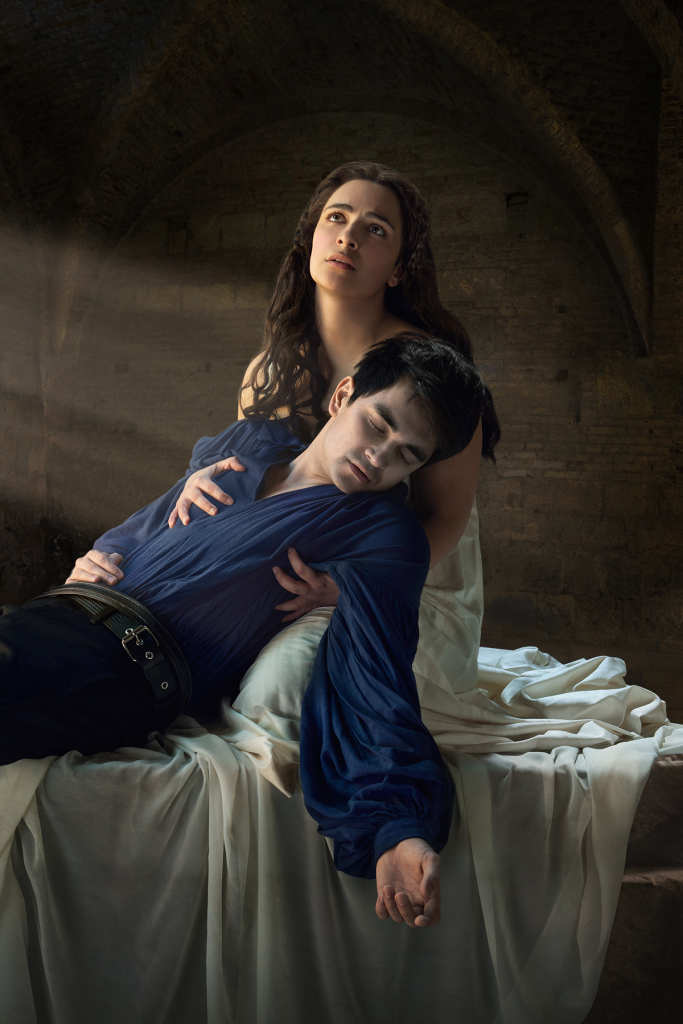
Credit: Emily Cooper
Bard on the Beach in Vanier Park until September 24, 2022
Tickets from $27 at 604-739-0559 or bardonthebeach.org
Posted August 10, 2022
“But, soft! what light through yonder window breaks?/It is the east and Juliet is the sun”. But on opening night of what is probably the best-known and best-loved of Shakespeare’s romantic tragedies, it wasn’t the sun but the almost full moon that gleamed down on us as we left Vanier Park. For the romantics among us – and, surely, you have to be a romantic to go to see Romeo and Juliet – it was the perfect conclusion.
Assuming audience familiarity with the play, director Anita Rochon mixes it up by starting at the end: Romeo and Juliet are both dead and the play then unravels back to the beginning to see how it all began. Rochon’s position is this: we all know how it ends so let’s see it from Juliet’s perspective.
But for those few not familiar with the play, it might be confusing, especially as a ghostly Juliet hovers around the action. Is she dead or isn’t she? But when the crypt scene is repeated at the end, it all falls into place and confusion dissolves.
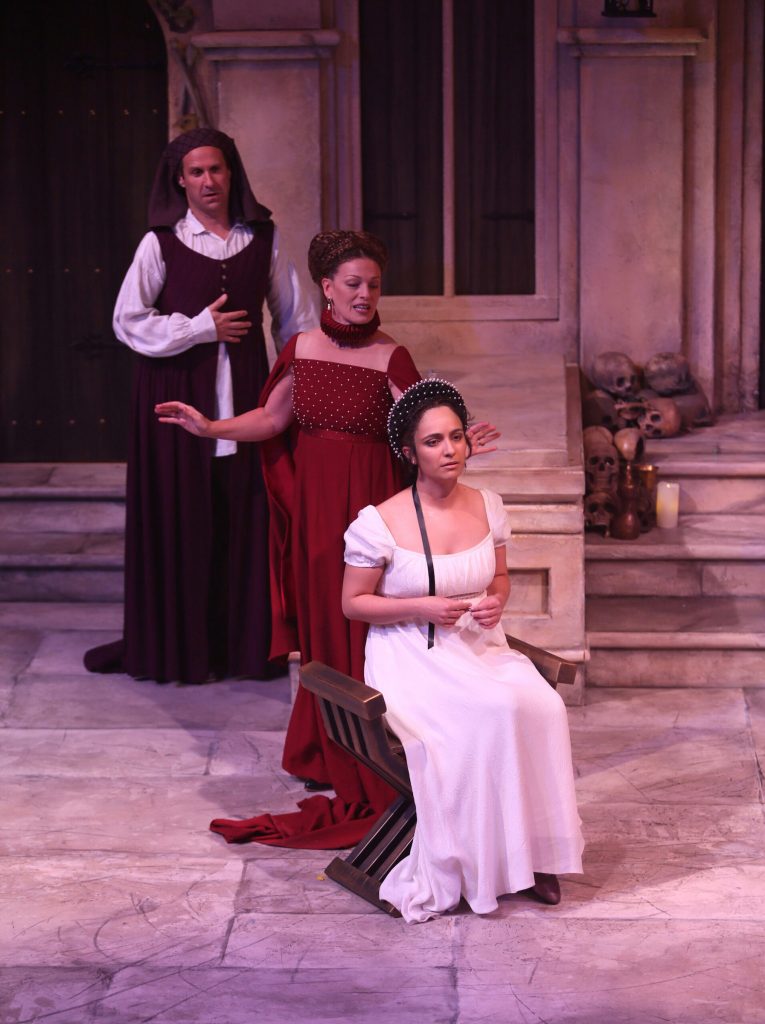
Credit: Tim Matheson
Rochon also play fast and loose, in a good way, with cutting and casting: Lord Capulet, Juliet’s father, is no longer around; Lady Capulet (marvellous Jennifer Lines) gets his dialogue as well as her own. All Lord Capulet’s fury levelled against Juliet when she refuses to marry Paris becomes Lady Capulet’s wrath. Like a furious lioness, Lines spits out insults; her hair almost stands on end. When Lady Capulet is charming, she’s cloying, almost giddy but when she’s angry, Lines makes her close to terrifying.
Lord and Lady Montague, Romeo’s parents, are also gone. Not much missed although their absence does deprive the play of the conciliation between the Montague and the Capulet families – something, no doubt, Shakespeare intended as a balm to the tragic events set in motion by the two feuding families. This production ends on a somewhat less hopeful note.
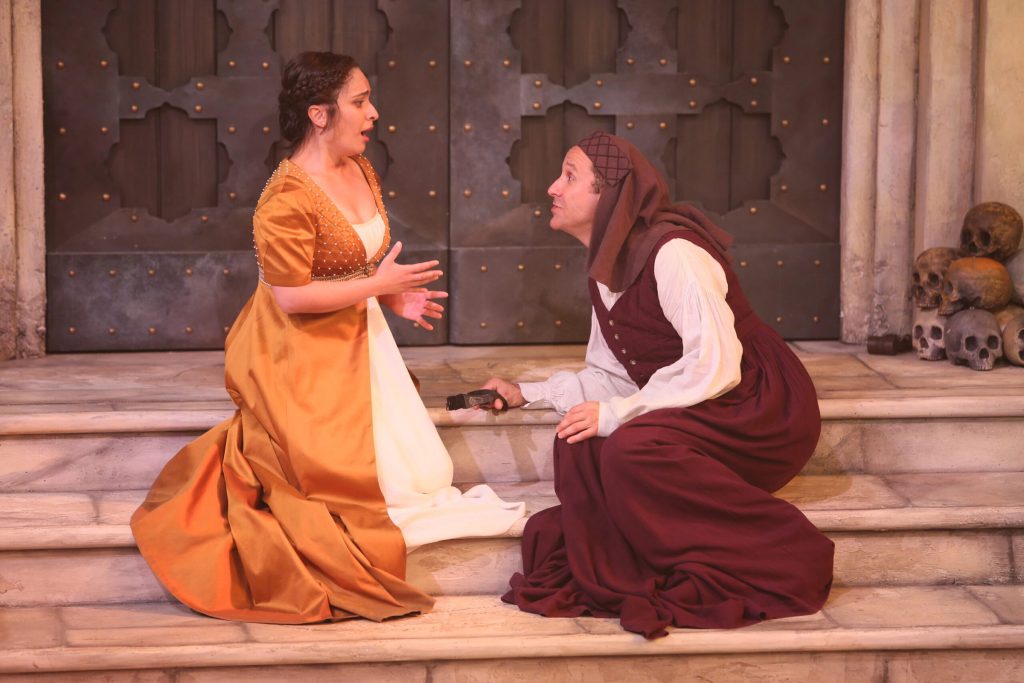
Credit: Tim Matheson
Ah, the nurse. The nurse is played by Andrew McNee and while the nurse has always been the source of some humour – her fussiness, loquaciousness, bawdiness, McNee uses all of that and then some. He has his way with the role and it’s hilarious. McNee’s a big guy (although much more svelte these days) so in Elizabethan drag, the sight gag is terrific: tights and boots over which he wears a huge purple gown and purple headdress. He’s like an armada under full sail and he’s such a master of the small gesture. When, for example, he makes up Juliet’s bed, he flaps the huge sheet, messes up, flaps it again, messes up again, gives one of those, ‘What the hell’ looks, and walks around to the other end of the bed to straighten out the sheet. We’ve all been there and McNee is so adept at turning it into a comic moment.
Mercutio, Juliet’s cousin, is play by Sara Vickruck, who also plays the Apothecary. Mercutio is the hothead in the play and generally is a more exciting character than Romeo – certainly more charismatic, sexier. In this production, Vickruck plays Mercutio more like the kid in class who’s always in trouble, always ready for a schoolyard brawl, a little shit disturber. It works and Vickruck, eventually pulling back a little on the attitude, manages to make us genuinely moved by the grace with which Mercutio dies.
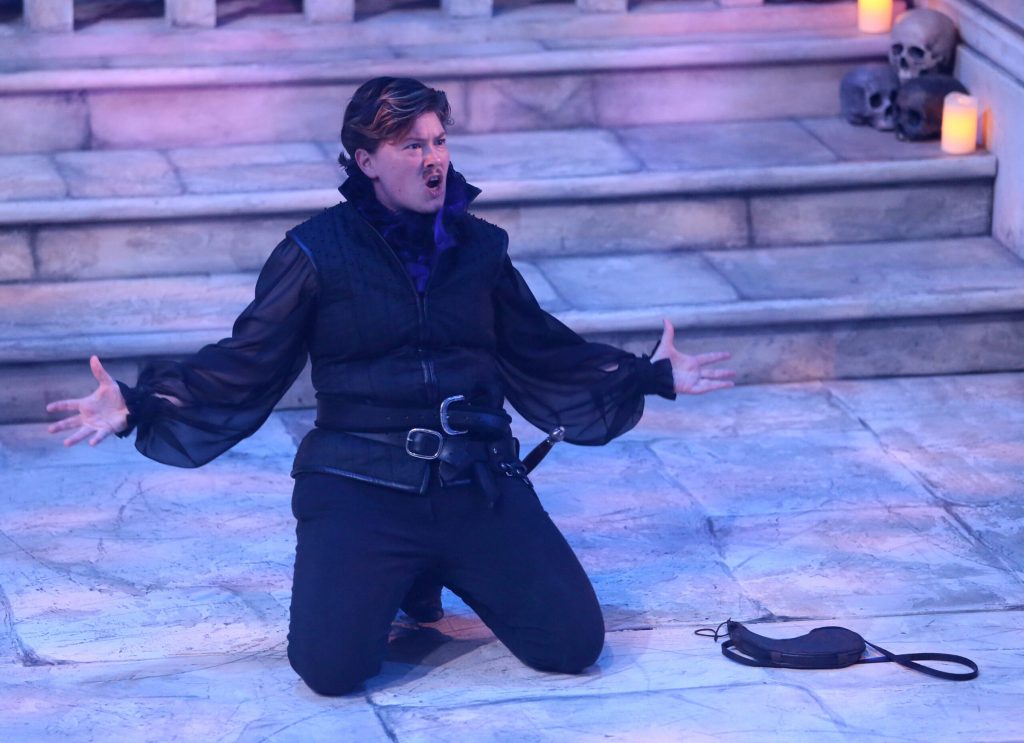
Credit: Tim Matheson
Another bit of gender-bending is Anita Wittenberg as Friar Laurence who, as a cleric, has always been somewhat asexual anyway. Wittenberg’s performance is a no-nonsense and affable reading of the role.
Romeo is always problematic in the play; it opens with him pining and drooping for Rosalind but having laid eyes on Juliet momentarily at a masked ball, he immediately forgets Rosalind. He’s petulant, whiny, mopey. He is, I think, seventeen or thereabouts. Daniel Fong makes Romeo as attractive as possible and there is good chemistry between him and Ghazal Azarbad who plays Juliet (who is thirteen). Azarbad gives Juliet some attitude and some wit that is more 2022 than Elizabethan; she also finds the sweetness and innocence in Juliet that’s necessary for the play to work.
Completing the cast are Ishan Sandhu as Paris, Angus Yam as Benvolio and Balthasar, and Victor Dolhai as Tybalt and Friar John.
Set design, a massive, grey stone façade with central iron doors flanked by hundreds of skulls, is Pam Johnson’s. Carmen Alatorre provides the gorgeous period costumes – especially Juliet’s pearl-encrusted gowns, Lady Capulet’s spectacular purple velvet and silk gown and Paris’s stunning white-on-white ensemble.
Terrific swordplay choreographed by Jonathan Hawley Purvis makes the fight scenes look real but keeps the performers (miraculously) safe.
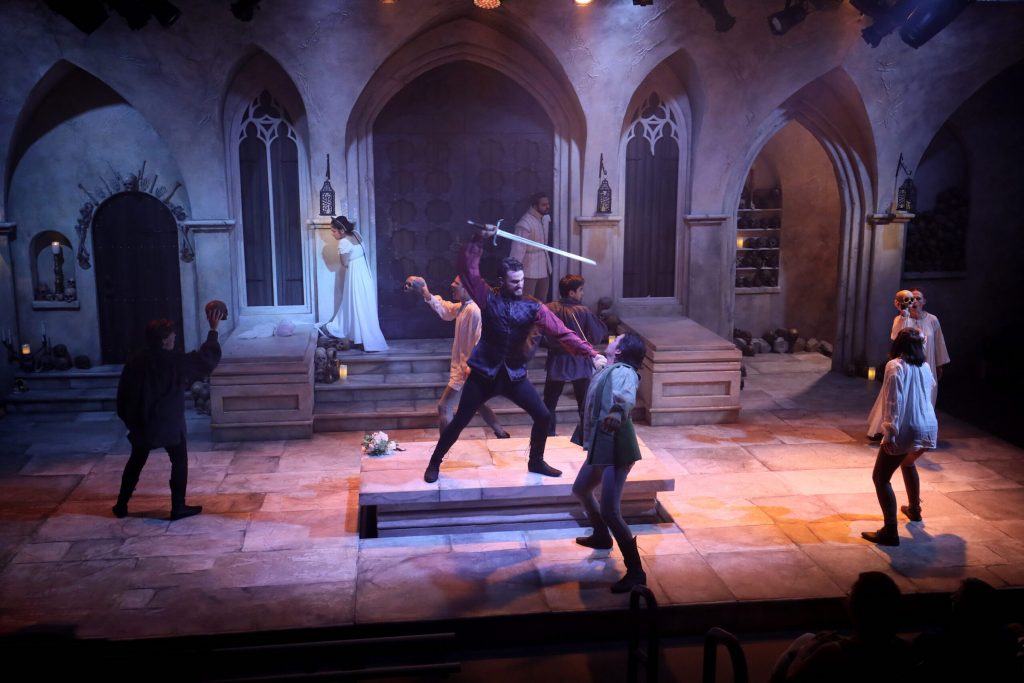
The offstage star of this production is Joelysa Pankanea whose ‘music’ makes this production remarkable. Scene changes are rung in with characters ringing hand bells – like the school bells of yore, and hand chimes that look a little like bongs and sound like a cross between a bell and an organ. It is simply beautiful – simple and beautiful. Solemn. Contemplative. Meditative. Zen.
“Lovely” – over-used but true – describes this production. Not a jarring note and just enough invention to make it interesting yet not so much as to make you ask, “why?”
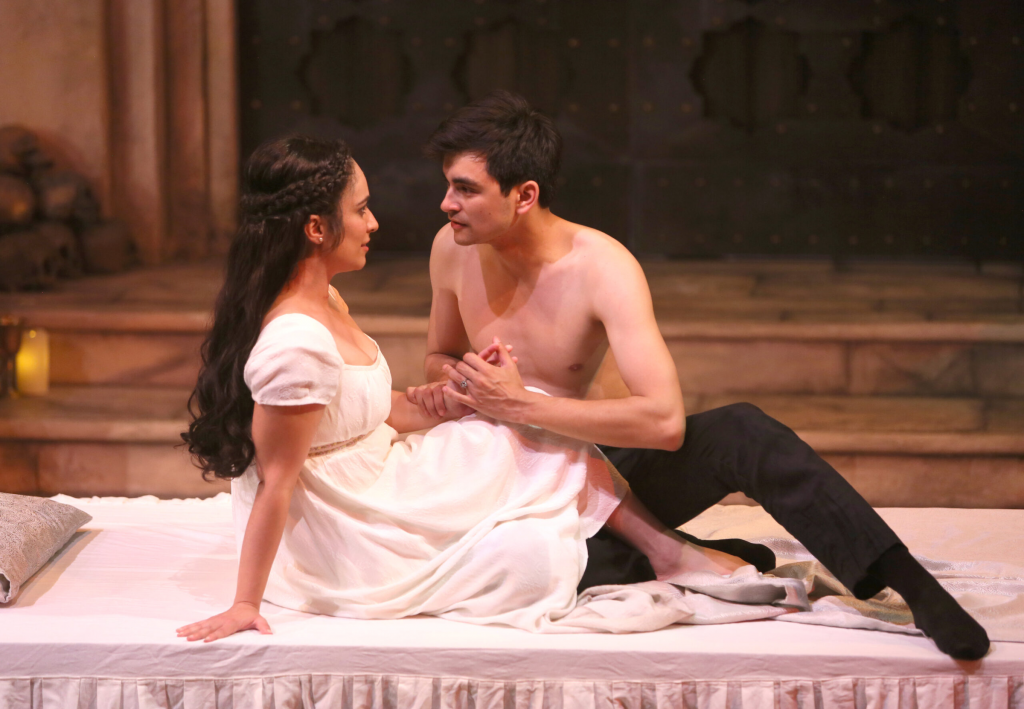
Credit: Tim Matheson
Catch it while the moon is full and think on Romeo and Juliet, star-crossed lovers who wonder if it is the lark or the nightingale singing. If the nightingale, they have more minutes to be together in Juliet’s bedchamber; if the lark, Romeo must flee. Parting, Shakespeare tells us, is such sweet sorrow.

